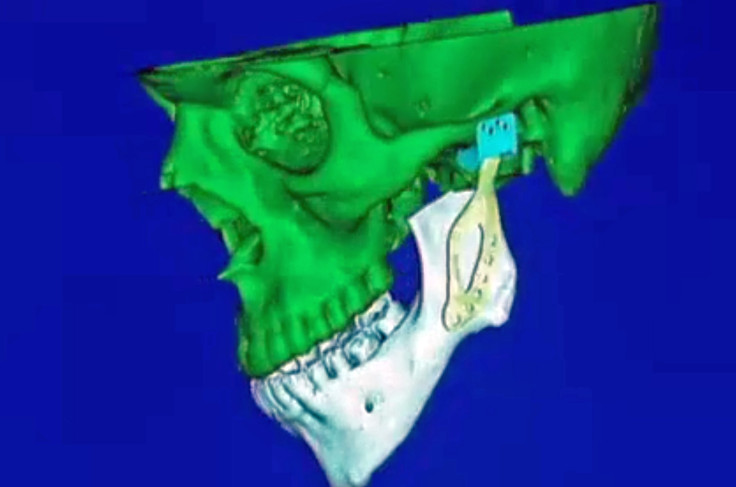Australian man receives world first 3D-printed titanium prosthetic jaw joint implant

An Australian man has become the first in the world to receive a 3D-printed titanium prosthetic jaw with a hinge-like joint that connects the jaw bone to the skull.
Richard Stratton, 32, was unable to open his mouth fully and was suffering increasing pain when moving his jaw or chewing, which is believed to stem from a childhood injury that might have prevented the jaw from growing properly.
The solution was to implant a prosthetic jaw and include the missing left condyle, which is the joint that joins the bone to the skull.
The pioneering 3D printed jaw operation is also the first of its kind for Australia, and was conducted by oral and maxillofacial surgeon Dr George Dimitroulis in collaboration with Melbourne University and 3D printing firm 3D Medical.
30 versions 3D printed to get the perfect fit
Melbourne University's mechanical engineering department took a prosthesis prototype designed by Dimitroulis and tested it, adding improvements.
CT scans of Stratton's head were used to 3D print a plastic model of his skull, and then 30 versions of the titanium part were printed from powdered titanium by 3D Medical.
"In terms of joint replacement specifically, what we call the TMJ – the temporomandibular joint – we suspect that this may be the first 3D-printed jaw joint in the world," Dimitroulis told ABC News.
"The beauty of this particular joint is that it was designed in Australia and manufactured [by an Australian firm] ... and not just manufactured in the common sense, but 3D printed.
"It really makes the fit truly patient-fitted, truly customised, as opposed to 'we're close enough' and it's something that I think will become the norm in the future as technology [becomes] cheaper."
3D printing is fast becoming indispensable in medicine
3D Printing is now being used increasingly in the healthcare industry, where the technology is used to create implants of jaw and hip bones, to help doctors to rehearse incredibly intricate, complex life-saving surgeries, as well as to make sure that implants will fit and work properly with the patient's body.
Dr Muhanad Hatamleh, a senior clinical maxillofacial prosthetist at King's College Hospital, told IBTimes UK at the 3D Printshow 2015 in May that 3D printing is now absolutely essential to doctors who work with reconstructive surgery for the head, mouth, jaw, face and neck.
Apart from implants, the technology is also being used to create perfect-fitting prosthetic limbs for amputees, and to 3D printout stem cells so that they behave exactly like they do in the human body.
© Copyright IBTimes 2025. All rights reserved.






















